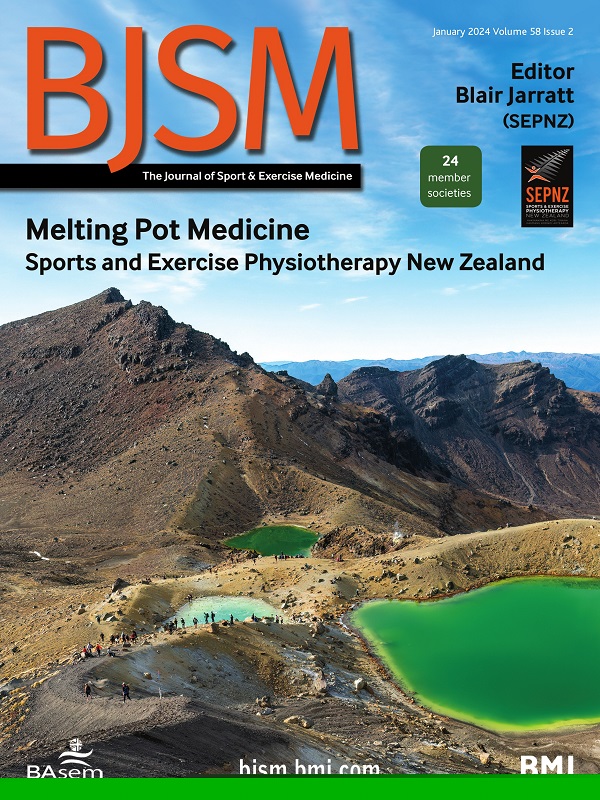Cryotherapy for treating soft tissue injuries in sport medicine: a critical review
IF 11.6
1区 医学
Q1 SPORT SCIENCES
引用次数: 0
Abstract
Sports medicine physicians and physiotherapists commonly use cryotherapy (eg, ice application) postinjury to decrease tissue temperature with the objective of reducing pain, limiting secondary injury and inflammation, and supporting healing. However, besides the analgesic effect of cryotherapy, a literature search revealed no evidence from human studies that cryotherapy limits secondary injury or has positive effects on tissue regeneration. Thus, our current understanding of the potential mechanisms and applications of cryotherapy largely relies on the results from animal studies. Importantly, treatment should not aim at obliterating the inflammatory and regeneration processes but instead aim to restore an adapted/normal regulation of these processes to improve function and recovery. However, some animal studies suggest that cryotherapy may delay or impair tissue regeneration. With the translation of laboratory animal studies to human sport medicine being limited by different injury and muscle characteristics, the effect of cryotherapy in patients with musculoskeletal injuries is uncertain. Thus, pending the results of human studies, cryotherapy may be recommended in the first 6 hours following an injury to reduce pain (and possibly haematoma), but it should be used with caution beyond 12 hours postinjury as animal studies suggest it may interfere with tissue healing and regeneration.冷冻疗法治疗运动医学中的软组织损伤:重要综述
运动医学医生和理疗师通常在受伤后使用冷冻疗法(如冰敷)来降低组织温度,目的是减轻疼痛、限制继发性损伤和炎症,并支持伤口愈合。然而,除了冷冻疗法的镇痛效果外,文献检索并未发现冷冻疗法限制二次损伤或对组织再生有积极影响的人体研究证据。因此,我们目前对冷冻疗法潜在机制和应用的了解主要依赖于动物实验的结果。重要的是,治疗的目的不应是消除炎症和再生过程,而应是恢复这些过程的适应/正常调节,以改善功能和恢复。然而,一些动物研究表明,冷冻疗法可能会延迟或损害组织再生。由于不同的损伤和肌肉特征限制了实验室动物研究向人类运动医学的转化,冷冻疗法对肌肉骨骼损伤患者的影响尚不确定。因此,在人类研究得出结果之前,可建议在受伤后的头 6 小时内使用冷冻疗法来减轻疼痛(并可能减轻血肿),但在受伤后超过 12 小时后应谨慎使用,因为动物研究表明冷冻疗法可能会影响组织愈合和再生。
本文章由计算机程序翻译,如有差异,请以英文原文为准。
求助全文
约1分钟内获得全文
求助全文
来源期刊
CiteScore
27.10
自引率
4.90%
发文量
217
审稿时长
3-8 weeks
期刊介绍:
The British Journal of Sports Medicine (BJSM) is a dynamic platform that presents groundbreaking research, thought-provoking reviews, and meaningful discussions on sport and exercise medicine. Our focus encompasses various clinically-relevant aspects such as physiotherapy, physical therapy, and rehabilitation. With an aim to foster innovation, education, and knowledge translation, we strive to bridge the gap between research and practical implementation in the field. Our multi-media approach, including web, print, video, and audio resources, along with our active presence on social media, connects a global community of healthcare professionals dedicated to treating active individuals.

 求助内容:
求助内容: 应助结果提醒方式:
应助结果提醒方式:


